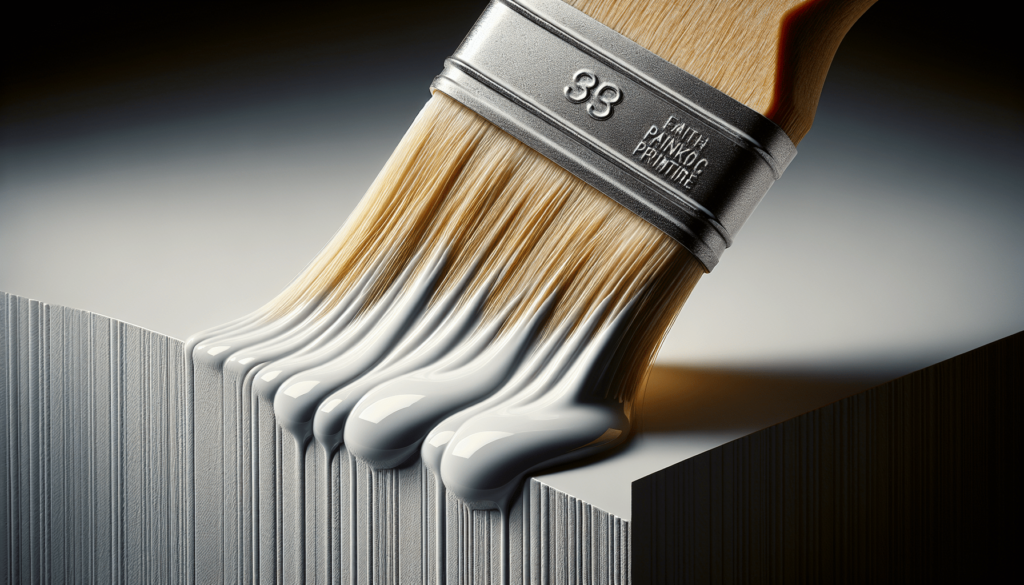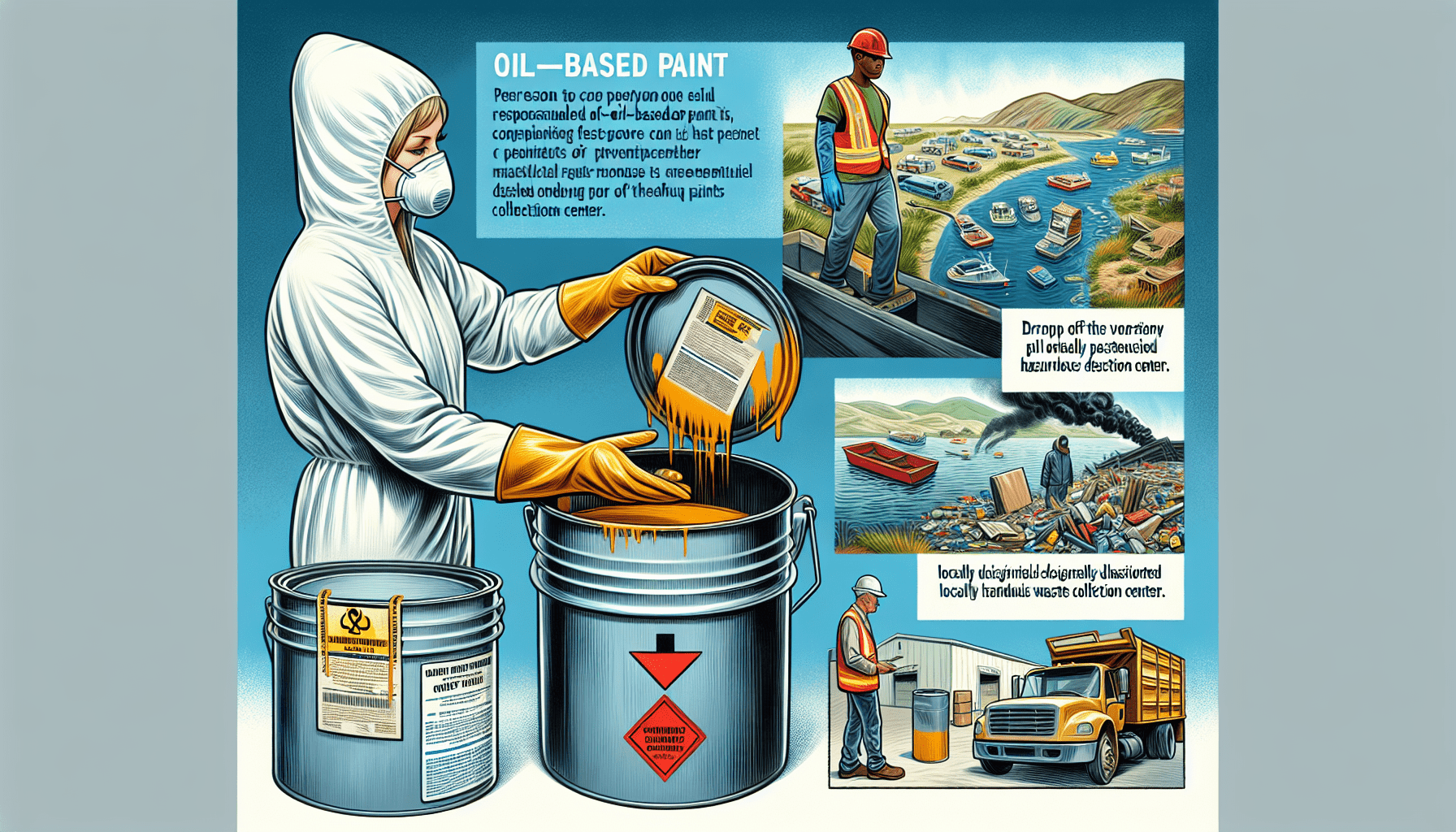Navigating the complexities of paint and primer can be a daunting task, particularly when dealing with different bases and finishes. Your questions about incorporating oil-based paint over water-based primer will be addressed in this detailed and insightful article. With a focus on the chemical compositions and reactions involved, as well as practical advice on best practices, it provides a comprehensive analysis to help you make the right choices in your painting projects.
Overview
The process of painting often involves more than just applying a coat or two of your chosen color. Preparation is key, as it involves a detailed understanding of the types of paint and primer that you will use for your project. In this article, we delve into the technicalities of using oil based paint over water based primer. This topic is a common query that comes up among DIY enthusiasts, homeowners, and painting professionals alike.
Explanation of oil based paint and water based primer
Oil-based paints are created with either synthetic or natural oils. Their gloss, durability, and rich color are suitable for various tasks, including furniture, molding, and trims. On the other hand, water-based primers, also known as latex or acrylic primers, dry quickly and have low levels of toxic emissions. Their ability to adhere to various surfaces makes them a preferred choice for many tasks.
Properties of Oil Based Paint
Oil-based paint is known for its excellent leveling properties, offering a smooth finish with fewer brush strokes. It is also durable and can withstand physical contacts without showing signs of wear and tear. It is more effective in covering stains and provides an attractive gloss, which captures the essence of the objects it is applied to. Oil-based paint is less susceptible to environmental factors, but it has a long drying time and releases more volatile organic compounds (VOCs) during and after application.
Explanation of oil based paint characteristics
You need to take note of various characteristics of oil-based paint. One, it has a robust and durable finish which resists chipping, making it an excellent choice for high traffic areas. Two, it is less sensitive to temperature and humidity changes. Three, it has excellent adhesion over problematic surfaces. Four, it offers superior stain and dirt resistance. However, oil-based paint releases a strong odor and high levels of VOCs, requiring good ventilation when painting indoors.

Properties of Water Based Primer
Water-based primer has a quick-drying time, making it a go-to for DIY enthusiasts and professional painters with tight timelines. It emits low levels of VOCs and can be easily cleaned with water. It adheres well to a variety of surfaces, creating an optimum base for all kinds of paint, including oil-based ones.
Explanation of water based primer characteristics
Water-based primer is versatile as it is compatible with both water-based and oil-based paints. It provides stellar adhesion and can fill minor cracks and voids on the painting surface. Due to its low VOC levels, it is environmentally friendly. The water-based primer is also beneficial because it doesn’t yellow over time, giving you a long-lasting, fresh look. However, it isn’t as effective at hiding significant stains compared to the oil-based type.
Compatibility of Oil Based Paint and Water Based Primer
A common misconception is that oil-based paints are incompatible with water-based primers. This is not entirely accurate. If applied correctly and prepared satisfactory, oil-based paint can indeed work with a water-based primer. Both products provide unique benefits that, when combined, can result in a high-quality finish.
Discussion on the compatibility of the two
The compatibility of oil-based paint over water-based primer is largely reliant on the preparation process. Although oil and water don’t mix, this doesn’t hold when it comes to paint and primer. Oil based paint can be applied over water-based primer. However, the surface needs to be fully cured before applying the oil-based paint.

Advantages of Using Oil Based Paint over Water Based Primer
Using oil-based paint over water-based primer combines the benefits of both types of products. The primer quickly dries, exhibits low VOC levels, and adheres readily to surfaces. For the topcoat, the oil-based paint offers superior durability, with a beautiful gloss finish.
Benefits of using oil based paint over water based primer
Combining these two products allows for a long-lasting, professional finish due to the durability of the oil paint and the adhesion properties of water-based primer. This combination requires less maintenance as the oil-based paint doesn’t chip easily. It is a viable option if you are after a medium giving superior stain and dirt resistance. It also leads to superior leveling that creates a smooth finish, effectively hiding any brush strokes.
Disadvantages of Using Oil Based Paint over Water Based Primer
While there are significant advantages to using oil-based paint over water-based primer, it is also pertinent to consider the drawbacks.
Drawbacks of using oil based paint over water based primer
The combination requires a slow, deliberate application because of the long drying time of oil-based paints. This means your painting project might take longer than anticipated. Also, the high VOC levels of oil-based paint pose environmental concerns and necessitate working in a properly ventilated space.
Preparation Before Applying Oil Based Paint over Water Based Primer
For your project to be a success, adequate preparation is needed. Firstly, your surface must be thoroughly cleaned, free from dirt and grease. Then, apply the water-based primer and let it dry fully according to the manufacturer’s instructions to provide a suitable base for the oil-based paint.
Steps to follow for proper preparation
Clean the surface and sand rough spots to ensure the primer adheres correctly. Apply the water-based primer and allow it to dry fully. Once dried, sand the primed surface lightly for a smooth finish. Remove any dust or particles remaining before applying your oil-based paint.
Testing Compatibility
Before beginning your painting project, we recommend testing the compatibility of your chosen paint and primer.
Methods for testing compatibility of the two
Pick a small, inconspicuous area, apply your water-based primer followed by your oil-based paint once the primer is fully cured. Check how well the paint adheres and its overall appearance before proceeding with the rest of your project.
Tips for Applying Oil Based Paint over Water Based Primer
Some practical tips will come handy for your project: ensure each layer is fully dried before applying the next, consider professional brushes, and make sure you work in a well-ventilated area.
Helpful tips to achieve best results
Preparing the surface properly is critical. During the application process, avoid overloading your brush or roller, as this could lead to drips and an uneven finish. Apply in thin layers and let each one dry completely before applying the next. A high-quality, synthetic-bristle brush is best for oil-based paints.
Conclusion
In conclusion, it is indeed possible to use oil-based paint over water-based primer. With proper preparation and careful application, this combination can offer fantastic results. Both these products have unique characteristics which, when used together, can deliver a beautiful, long-lasting finish. Nonetheless, always remember to conduct a compatibility test before commencing your painting project.



